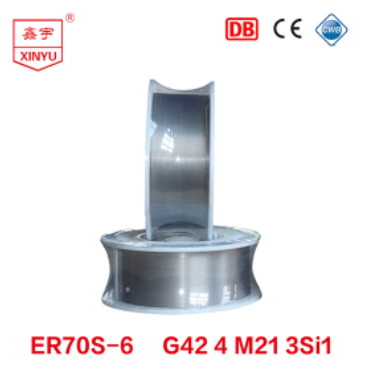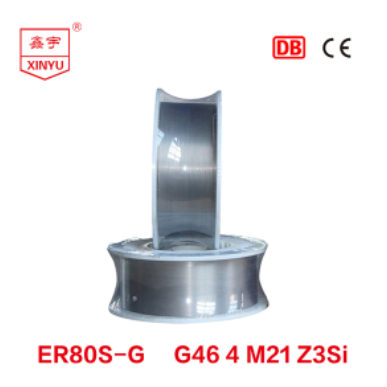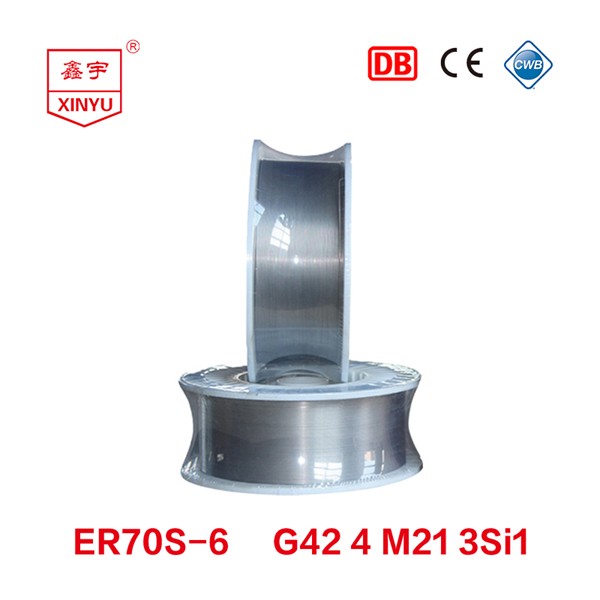What Is MIG/MAG Welding?
- 21 August, 2022
- 6221 Besuche

MIG/MAG welding is one of the most commonly used of all welding processes. But how does it work? In our blog article you will find everything you need to know about MIG/MAG welding – from choosing the right shielding gases and filler metals to the characteristics of the different arc types.
MIG/MAG: Two Varieties of Gas-Shielded Arc Welding
MIG/MAG welding is also known as gas-shielded metal arc welding (GMAW) and is one of the welding processes that uses a protective gas shield. This also includes all arc welding processes where shielding gases are used to protect the weld pool from unwanted contact with the oxygen in the ambient air.
MIG/MAG welding is actually two different welding processes: MIG welding stands for metal inert gas welding. This process uses inert – i.e., non-reactive – shielding gases such as argon, helium, or a mix of the two. MAG welding stands for metal active gas welding. During this process, active shielding gases such as carbon dioxide (CO2) or oxygen (O2) are added to the carrier gas argon. It is, however, also possible to use pure CO2 as a shielding gas for the weld pool.
Where is the Process Used?
MIG/MAG welding processes are very versatile and can be used in a range of sectors, including the metalworking industry, shipbuilding, steel and container construction, and the automotive industry. MIG/MAG processes can be used with components of different thicknesses and geometries, and which are made from different materials. MIG welding is particularly suited to the non-ferrous metals aluminum, magnesium, copper, and titanium. MAG welding is usually used to weld unalloyed, low-alloy, and high-alloy steels.
MIG/MAG Welding: How it Works
Direct current is used for MIG/MAG welding. The arc burns between the workpiece and a consumable wire electrode, which is also the source of the necessary filler material and is essentially endless. It is supplied either on a spool or in a drum and is guided to the contact tip by the drive unit. The free wire end is relatively short, which allows a high amperage to be used in spite of the thin wire electrodes.
Solid wires or “flux core” wires can also be used as filler metals, depending on the requirements. Solid wires are most often used for MIG/MAG welding. These wires are manufactured by drawing them to the desired nominal diameter from a rolled wire. Flux core wires are manufactured by introducing the powdery filling into a U-shaped strip at one of the production stations. The strip is then sealed by folding or welding it. Different fillings affect the welding process in different ways. The shielding gas flows from a gas nozzle that surrounds the electrode. It protects the arc and the weld pool against contact with the ambient oxygen.
>> Shop for MAG / CO2 welding wires here
Arc Types
The arc is a basic requirement for MIG/MAG welding. It is created by closing the circuit between the electrode and the workpiece. The wire electrode almost always has positive polarity. During the arc phase, the material transfers dynamically from the consumable electrode to the workpiece. This process – and therefore the type of arc – depends on the voltage and the wire speed. If the voltage and wire speed increase, the droplet volume increases and the material transfer becomes short circuit-free.
Generally speaking, arc types are divided into four different categories, but the boundaries between these categories are fluid. During MIG welding, either a spray arc or a pulsed arc is usually used. Dip transfer arcs, intermediate arcs, spray arcs, and pulsed arcs can all be used with MAG welding.
ㆍDip transfer arcs
Dip transfer arcs are in the lower power range – in other words, they are associated with a low voltage and a low wire speed. With the dip transfer arc, welding is possible in virtually any position. There is minimal spattering and the arc can be controlled very effectively. It is particularly suited to welding light gauge sheets and root passes.
ㆍIntermediate arc
With intermediate arcs, short circuits and spray transfers alternate at irregular intervals. This leads to increased spattering – meaning that this particular arc type should be avoided as far as possible.
ㆍSpray arc
Spray arcs burn continuously without short circuit interruption. The filler metal transfers at high speed and in fine droplets into the weld pool. A degree of heat input into the workpiece, a high deposition rate, and deep penetration are all characteristics of the spray arc. For this reason, it is ideal for welding thicker sheets.

ㆍPulsed arc
When using pulsed arcs, the material transfer is controlled using pulses in order to avoid unwanted short circuits. This results in an extremely low-spatter, versatile arc. Welders can produce high quality results, even with different materials and different thicknesses.
ㆍRotating arc
Rotating arcs are particularly powerful and ideally suited to welding thick workpieces, thanks to their high heat input. The droplet is deflected to the side when it detaches from the wire electrode and is transferred to the weld pool in a rotating motion. This process can only be used with mechanized systems, which limits the number of suitable applications.
ㆍCombined arc
Combined arcs are often made up of pulsed arcs and dip transfer arcs. The pulsed arc creates the necessary penetration and heat input, while the dip transfer arc ensures improved controllability of the weld pool. This type of arc is often used for welding out-of-position.
Advantages of MIG/MAG Welding:
High deposition rate
No slag formation
Simple ignition of the arc
Well-suited to mechanized and automated welding
High welding speeds can be achieved while still maintaining a high weld seam quality
Well-suited to out-of-position welding and welding in difficult positions
Low filler metal costs
Disadvantages of MIG/MAG Welding:
Welding outdoors or in drafty halls is only possible in certain circumstances
Sensitive to rust and humidity
Susceptible to porosity and lack of fusion
High risk of spattering
Partially lower weld seam quality than with TIG welding
The Best Welding Wire Producer
Hebei XINYU Welding Co., Ltd, which mainly produces high strength steel welding wire, Non-copper-coated solid wire, submerged arc & stainless steel welding wire . Our products are widely applied to the welding of low-alloy high tensile large & key steel structures in coal machinery, construction machinery, petrochemical machinery, pressure vessels or tanks, oil & gas pipelines, military industry, shipbuilding, bridge and high-rise buildings etc. At the same time,we are the only interprise in the domestic which produces welding wire as well as welding wire equipment. If you are interested in our products, please contact us now!
- Kategorie:
- Unternehmen
- Keine Kommentare



